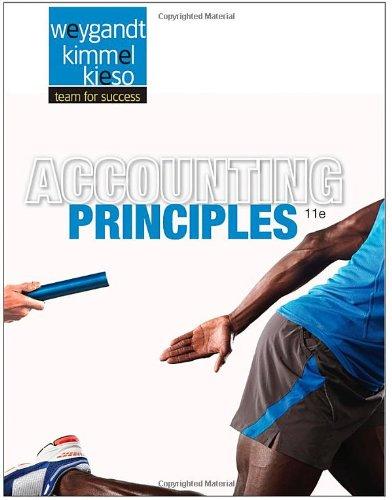Jeter Co. uses a perpetual inventory system and both an accounts receivable and an accounts payable subsidiary
Question:
Jeter Co. uses a perpetual inventory system and both an accounts receivable and an accounts payable subsidiary ledger. Balances related to both the general ledger and the subsidiary ledger for Jeter are indicated in the working papers. Presented on the next page are a series of transactions for Jeter Co. for the month of January. Credit sales terms are 2/10, n/30. The cost of all merchandise sold was 60% of the sales price.
Jan. 3 Sell merchandise on account to B. Corpas $3,600, invoice no. 510, and to J. Revere $1,800, invoice no. 511.
5 Purchase merchandise from S. Gamel $5,000 and D. Posey $2,200, terms n/30.
7 Receive checks from S. Mahay $4,000 and B. Santos $2,000 after discount period has lapsed.
8 Pay freight on merchandise purchased $235.
9 Send checks to S. Meek for $9,000 less 2% cash discount, and to D. Saito for $11,000 less 1% cash discount.
9 Issue credit of $300 to J. Revere for merchandise returned.
10 Summary daily cash sales total $15,500.
11 Sell merchandise on account to R. Beltre $1,600, invoice no. 512, and to S. Mahay $900, invoice no. 513.
12 Pay rent of $1,000 for January.
13 Receive payment in full from B. Corpas and J. Revere less cash discounts.
15 Withdraw $800 cash by M. Jeter for personal use.
15 Post all entries to the subsidiary ledgers.
16 Purchase merchandise from D. Saito $15,000, terms 1/10, n/30; S. Meek $14,200, terms 2/10, n/30; and S. Gamel $1,500, terms n/30.
17 Pay $400 cash for office supplies.
18 Return $200 of merchandise to S. Meek and receive credit.
20 Summary daily cash sales total $20,100.
21 Issue $15,000 note, maturing in 90 days, to R. Moses in payment of balance due.
21 Receive payment in full from S. Mahay less cash discount.
22 Sell merchandise on account to B. Corpas $2,700, invoice no. 514, and to R. Beltre $2,300, invoice no. 515.
22 Post all entries to the subsidiary ledgers.
23 Send checks to D. Saito and S. Meek in full payment less cash discounts.
25 Sell merchandise on account to B. Santos $3,500, invoice no. 516, and to J. Revere $6,100, invoice no. 517.
27 Purchase merchandise from D. Saito $14,500, terms 1/10, n/30; D. Posey $3,200, terms n/30; and S. Gamel $5,400, terms n/30.
27 Post all entries to the subsidiary ledgers.
28 Pay $200 cash for office supplies.
31 Summary daily cash sales total $21,300.
31 Pay sales salaries $4,300 and office salaries $3,800.
Instructions
(a) Record the January transactions in a sales journal, a single-column purchases journal, a cash receipts journal as shown on page 340, a cash payments journal as shown on page 346, and a two-column general journal.
(b) Post the journals to the general ledger.
(c) Prepare a trial balance at January 31, 2014, in the trial balance columns of the worksheet.
Complete the worksheet using the following additional information.
(1) Office supplies at January 31 total $900.
(2) Insurance coverage expires on October 31, 2014.
(3) Annual depreciation on the equipment is $1,500.
(4) Interest of $50 has accrued on the note payable.
(d) Prepare a multiple-step income statement and an owner’s equity statement for January and a classified balance sheet at the end of January.
(e) Prepare and post adjusting and closing entries.
(f) Prepare a post-closing trial balance, and determine whether the subsidiary ledgers agree with the control accounts in the general ledger.
Accounts payable (AP) are bills to be paid as part of the normal course of business.This is a standard accounting term, one of the most common liabilities, which normally appears in the balance sheet listing of liabilities. Businesses receive... Accounts Receivable
Accounts receivables are debts owed to your company, usually from sales on credit. Accounts receivable is business asset, the sum of the money owed to you by customers who haven’t paid.The standard procedure in business-to-business sales is that... Balance Sheet
Balance sheet is a statement of the financial position of a business that list all the assets, liabilities, and owner’s equity and shareholder’s equity at a particular point of time. A balance sheet is also called as a “statement of financial...
Step by Step Answer:

Accounting Principles
ISBN: 9781118566671
11th Edition
Authors: Jerry Weygandt, Paul Kimmel, Donald Kieso





